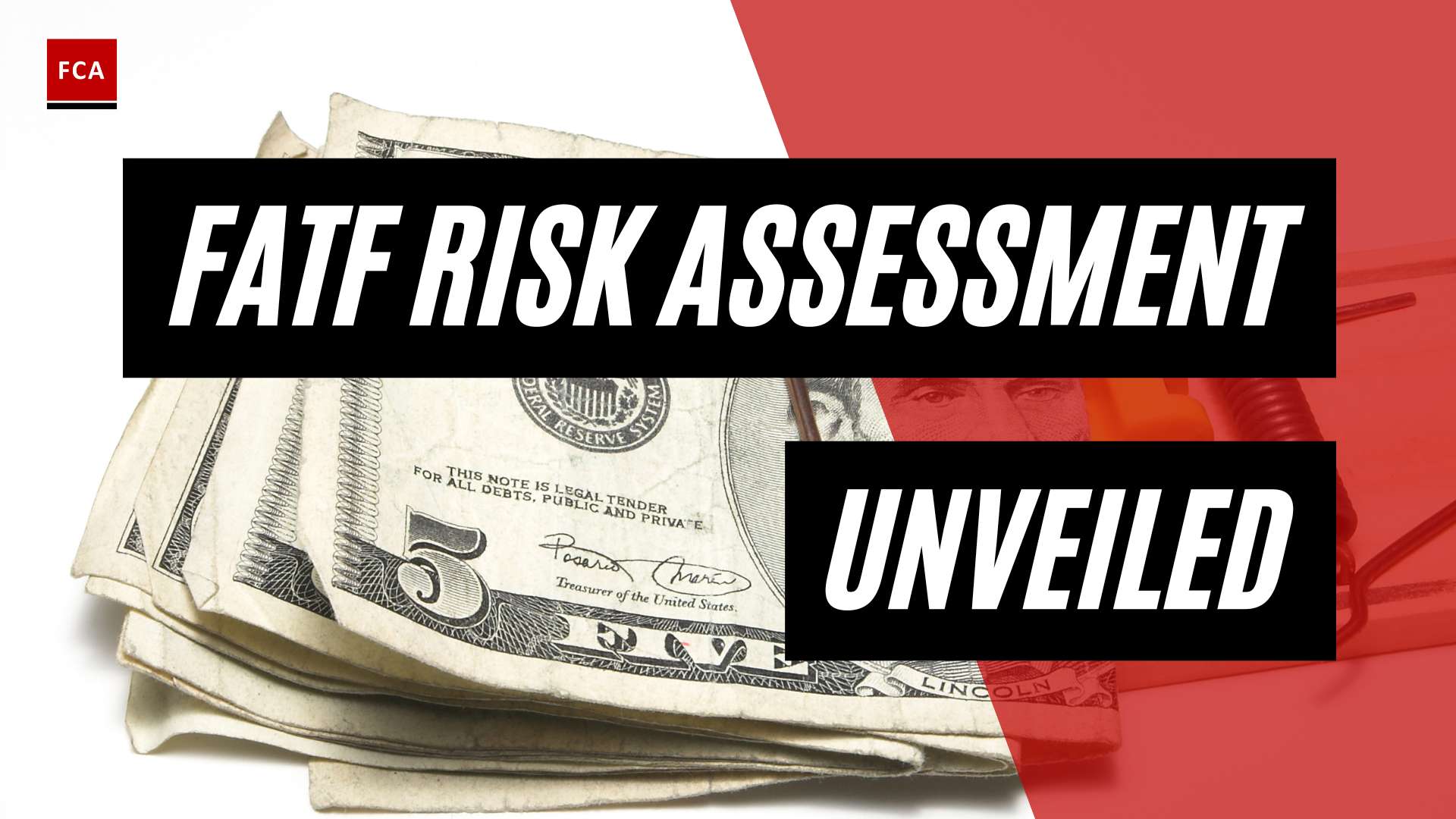Understanding AML Training
AML training plays a crucial role in equipping professionals with the knowledge and skills necessary to combat money laundering and financial crimes. This section explores the importance of AML training and the target audience for such programs.
Importance of AML Training
The importance of AML training cannot be overstated. Financial institutions and other entities subject to anti-money laundering regulations are under increasing pressure to implement robust AML programs to detect and prevent illicit activities. Effective training programs are vital in ensuring that individuals involved in compliance, risk management, anti-money laundering, and anti-financial crime have the necessary knowledge and expertise to fulfill their roles.
AML training programs provide participants with an understanding of the regulatory requirements, red flags of suspicious activity, and the techniques used by money launderers. By enhancing their understanding of AML concepts and best practices, professionals can identify and report suspicious transactions, implement sound customer due diligence procedures, and contribute to the overall effectiveness of the institution’s AML program.
Furthermore, AML training helps organizations meet their legal and regulatory obligations. Financial institutions are required by law to establish and maintain effective AML programs. Failure to comply with AML regulations can result in severe penalties, reputational damage, and potential legal consequences. A well-designed training program ensures that employees are aware of their obligations and can perform their duties in compliance with applicable laws and regulations.
Target Audience for AML Training
The target audience for AML training programs includes professionals working in compliance, risk management, anti-money laundering, and anti-financial crime roles. This encompasses individuals in financial institutions, such as banks, credit unions, and brokerage firms, as well as professionals in non-financial sectors, including real estate, gaming, and virtual currency businesses.
AML training programs cater to individuals at various levels of experience and expertise. They are designed to meet the needs of both beginners who are new to AML concepts and seasoned professionals seeking to enhance their knowledge and skills.
Institutions may also have specific AML training requirements based on their risk profile and the nature of their business. For example, employees involved in customer onboarding, transaction monitoring, and compliance functions may require more in-depth training to effectively fulfill their responsibilities.
By targeting the appropriate audience, AML training programs can address the specific challenges and requirements faced by professionals in different roles and sectors. This ensures that the training is relevant, practical, and tailored to the needs of the participants.
To explore different AML training options and certifications, you can refer to AML training courses provided by organizations like FCA (Financial Crime Academy) or other specialized training providers. These programs offer a range of formats, including online self-study courses, virtual classrooms, in-person training sessions, and specialized training programs to suit the diverse needs of AML professionals.
In the next section, we will delve into the key components of AML training programs, including regulations, risk assessment, customer due diligence, and reporting procedures.
Key Components of AML Training Programs
AML training programs are designed to equip professionals working in compliance, risk management, anti-money laundering, and anti-financial crime with the necessary knowledge and skills to identify and prevent money laundering and illicit financial activities. These programs typically consist of several key components that form the foundation of effective AML training.
Regulations and Legal Requirements
A fundamental component of AML training programs is an understanding of the regulations and legal requirements pertaining to anti-money laundering efforts. Professionals need to be familiar with key AML regulations and guidelines, such as the Bank Secrecy Act (BSA) in the United States, which mandates financial institutions to enforce an AML compliance program (Unit21). These regulations outline the obligations and responsibilities of financial institutions, including the identification and reporting of suspicious activities, customer due diligence, and record-keeping requirements.
Risk Assessment and Identification of Suspicious Activity
Risk assessment is a crucial element of AML training programs. Professionals learn how to assess the risk associated with different customers, transactions, and business relationships. This involves understanding factors such as high-risk countries, politically exposed persons (PEPs), due diligence reports, and ultimate beneficial owners (UBOs).
Training programs also focus on the identification of suspicious activity. Professionals learn to recognize red flags and indicators of potential money laundering or other illicit financial activities. This includes understanding transaction patterns, unusual behavior, and potential sources of illicit funds.
Customer Due Diligence and Reporting Procedures
Customer due diligence (CDD) is an integral part of AML training programs. Professionals learn how to conduct thorough investigations and assessments of customers and their transactions. This involves verifying customer identities, understanding the nature of their business, and assessing the potential risks they pose. Training programs teach professionals how to effectively perform CDD while adhering to relevant AML jurisdictions (Flagright).
In addition, AML training programs cover reporting procedures. Professionals are trained on how to prepare and submit suspicious activity reports (SARs) and other required documentation to the appropriate authorities, such as financial intelligence units (FIUs) as recommended by the Financial Action Task Force (FATF).
By focusing on these key components, AML training programs provide professionals with the knowledge and skills necessary to effectively combat money laundering and other financial crimes. It is important for individuals working in these fields to stay up-to-date with the latest regulations, risk assessment techniques, and reporting procedures to ensure compliance and contribute to a robust AML compliance program.
Types of AML Training Programs
When it comes to AML (Anti-Money Laundering) training programs, there are various options available to cater to the diverse needs of professionals working in compliance, risk management, anti-money laundering, and anti-financial crime. These programs aim to provide the necessary knowledge and skills to combat financial crimes effectively. Let’s explore three common types of AML training programs:
Online Self-Study Courses
Online self-study courses offer flexibility and convenience for individuals seeking to enhance their AML knowledge at their own pace. These courses are typically available through learning platforms and websites. Users can access comprehensive training materials, including videos, presentations, quizzes, and interactive modules. Online self-study courses allow learners to navigate through the content based on their specific needs and schedule.
Virtual Classrooms and In-Person Training
Virtual classrooms and in-person training sessions provide a more interactive learning experience. These programs are led by expert instructors who guide participants through AML concepts, case studies, and real-world scenarios. Virtual classrooms allow for remote participation, making it accessible to individuals from different locations. In-person training sessions, on the other hand, offer the opportunity for face-to-face interaction and networking with fellow professionals in the field.
Specialized Training Programs
Specialized training programs cater to specific industries or roles within the financial services sector. These programs focus on the unique AML challenges and requirements faced by professionals in those areas. For example, accountants may benefit from specialized AML training programs that address money laundering risks, compliance obligations, and reporting requirements specific to their profession.
By offering a range of training formats, including online self-study courses, virtual classrooms, in-person training, and specialized programs, AML training providers ensure that professionals have access to the most suitable training options based on their preferences, learning style, and specific requirements. These training programs play a crucial role in equipping individuals with the knowledge and skills necessary to detect, prevent, and combat money laundering activities effectively.
Benefits of AML Training Programs
AML training programs offer numerous benefits to professionals working in compliance, risk management, anti-money laundering, and anti-financial crime. These programs are designed to enhance knowledge and skills, ensure compliance with regulatory requirements, and prevent financial crimes.
Enhancing Knowledge and Skills
AML training programs provide individuals with a comprehensive understanding of anti-money laundering concepts, regulations, and best practices. By participating in these programs, professionals can enhance their knowledge of money laundering techniques, typologies, and emerging trends. They also gain insights into the latest regulatory developments and international standards.
The training programs cover various topics, including risk assessment, investigation techniques, compliance programs, and regulatory frameworks. By acquiring in-depth knowledge in these areas, professionals can develop the skills necessary to identify and prevent financial crimes effectively. This knowledge and skill enhancement helps them perform their roles with greater confidence and competence.
Meeting Compliance Requirements
AML training programs play a crucial role in meeting compliance requirements. Financial institutions and businesses operating in high-risk sectors are obligated to implement robust anti-money laundering measures. Regulatory authorities like FATF and OFAC set forth specific obligations and guidelines that organizations must follow to combat money laundering and financial crime.
Comprehensive AML training programs ensure that professionals understand these obligations and are equipped to fulfill their compliance responsibilities. By staying up to date with the latest regulations and legal requirements, individuals can contribute to the development and maintenance of effective AML compliance programs within their organizations. This, in turn, helps organizations mitigate the risk of fines, penalties, and reputational damage associated with non-compliance.
Preventing Financial Crimes
One of the primary objectives of AML training programs is to prevent financial crimes. By equipping professionals with the knowledge and skills to identify and report suspicious activity, these programs help create a strong line of defense against money laundering, fraud, and other illicit financial activities.
Through AML training, professionals learn how to conduct effective customer due diligence, recognize red flags indicating potential money laundering, and implement robust reporting procedures. By applying these techniques, they can detect and prevent illicit financial transactions, thereby safeguarding the integrity of the financial system.
AML training programs also raise awareness about the evolving financial crimes landscape. As criminals continually adapt their methods, it is crucial for professionals to stay informed about the latest trends and techniques employed by money launderers. By understanding these evolving threats, professionals can proactively implement measures to counteract and mitigate the risks posed by financial crimes.
By participating in AML training programs, professionals can play an active role in combating money laundering, protecting their organizations, and contributing to the overall integrity of the financial system.
To learn more about AML training programs, including different types and certification options, visit our article on aml training courses.
Building an Effective AML Compliance Program
To establish a robust and effective Anti-Money Laundering (AML) compliance program, several key components must be in place. These components include a designated compliance officer, comprehensive AML compliance policies and controls, and a well-structured training program with independent audits.
Compliance Officer and Resources
A vital component of an effective AML compliance program is the designation of a knowledgeable and experienced compliance officer. This individual should have a clear understanding of AML regulations, industry best practices, and the organization’s specific risk profile. The compliance officer is responsible for overseeing the implementation and maintenance of the AML program, ensuring adherence to regulatory requirements, and serving as a point of contact for AML-related matters (Unit21).
In addition to the compliance officer, allocating sufficient resources to support the AML compliance program is crucial. This includes providing adequate staffing, technology tools, and access to relevant data and information. AML compliance requires collaboration across multiple departments, such as risk management, legal, and operations, to effectively identify and mitigate money laundering risks.
AML Compliance Policies and Controls
AML compliance policies and controls form the foundation of an effective program. These policies should clearly outline the organization’s commitment to combating money laundering, establish internal controls, and provide guidance to employees on their AML responsibilities. It is important to ensure that these policies align with applicable regulations and best practices (Unit21).
Key controls and procedures should be implemented to identify and mitigate money laundering risks. These controls may include customer due diligence, transaction monitoring, and suspicious activity reporting. The policies and controls should be regularly reviewed and updated to adapt to evolving regulatory requirements and emerging risks.
Training Program and Independent Audits
A comprehensive training program is essential to educate employees on AML regulations, the organization’s policies and procedures, and their individual roles and responsibilities in detecting and preventing money laundering. Training should be tailored to different job functions and levels of AML risk exposure. It is crucial to provide regular and ongoing training to keep employees informed about the latest AML developments and emerging typologies.
The training program should cover topics such as recognizing suspicious activity, conducting customer due diligence, and reporting obligations. Utilizing various training methods, such as online courses, virtual classrooms, and videos, can help accommodate different learning styles and ensure widespread knowledge dissemination.
To validate the effectiveness of the AML training program and overall compliance program, independent audits and reviews should be conducted. These audits assess the program’s adherence to regulatory requirements, identify any gaps or weaknesses, and provide recommendations for improvement. Regular audits demonstrate an organization’s commitment to maintaining a strong AML compliance culture and provide assurance to stakeholders, regulators, and customers (Unit21).
By establishing a compliance officer, implementing comprehensive AML compliance policies and controls, and maintaining a robust training program with independent audits, organizations can build an effective AML compliance program. This program will help mitigate the risk of money laundering, ensure compliance with regulatory requirements such as the Bank Secrecy Act (BSA), and protect the integrity of the financial system.
Frequency and Evaluation of AML Training
To maintain a strong anti-money laundering (AML) compliance program, it is crucial to establish the frequency of AML training and regularly assess its effectiveness. This section will discuss the importance of determining training frequency and evaluating the impact of AML training programs.
Determining Training Frequency
AML training programs typically require employees to complete training at least once every year to ensure they are up to date with the latest regulations and practices in the field (Great Chatwell Academy). However, the frequency of training may vary based on the risk exposure and nature of the business. Higher-risk firms, such as those involved in conveyancing or complex corporate transactions, may require more frequent formal training sessions, typically annually, with additional reminders and briefings in between. On the other hand, lower-risk firms may opt for training every two years, depending on their risk assessment results (Jonathon Bray).
Determining the appropriate frequency of AML training should be guided by firm-wide risk assessments. By assessing the risk exposure of the business, organizations can identify the areas that require more stringent AML controls and training. This approach ensures that training efforts are focused on the areas with the highest risk, helping to mitigate potential vulnerabilities.
Assessing Training Effectiveness
Continuous monitoring and ongoing education are vital components of an effective AML training program. Regular assessments and evaluations should be conducted to measure the effectiveness of the training and identify areas for improvement. By evaluating the impact of the training, organizations can gauge the level of knowledge and understanding among employees, assess their ability to apply AML principles in their day-to-day activities, and identify any gaps that need to be addressed.
The evaluation process can involve various methods, such as quizzes, assessments, case studies, or practical exercises. These evaluations can be conducted at regular intervals throughout the training program to ensure continuous learning and reinforce key concepts. Feedback from participants can also be valuable in identifying areas that require further clarification or additional training resources.
Additionally, organizations should consider conducting independent audits of their AML compliance program, including the training component. These audits provide an objective assessment of the effectiveness of the training program, highlighting any deficiencies or areas that need improvement.
By regularly evaluating the effectiveness of AML training programs, organizations can ensure ongoing compliance with regulations, enhance the knowledge and skills of employees, and strengthen their ability to prevent financial crimes. Through continuous improvement efforts, organizations can adapt to the evolving landscape of financial crimes and maintain a robust AML compliance program.
Challenges and Importance of AML Training
In the ever-evolving landscape of financial crimes, the importance of effective AML training cannot be overstated. AML training plays a crucial role in equipping professionals working in compliance, risk management, anti-money laundering, and anti-financial crime with the necessary knowledge and skills to identify and prevent illicit activities. However, there are several challenges that organizations and individuals face in implementing AML training programs. Let’s explore some of these challenges and the importance of overcoming them.
Evolving Financial Crimes Landscape
Money laundering techniques are becoming increasingly complex and sophisticated. The rise of new technologies, such as virtual currencies and online platforms, has provided additional avenues for money launderers to exploit. To effectively combat these evolving financial crimes, AML officers need to stay abreast of the latest trends and techniques used by money launderers. AML training programs should include up-to-date regulations and legal loopholes exploited by money launderers, equipping individuals in high-risk sectors like banks, investment firms, and financial institutions to effectively combat money laundering and maintain compliance (Sanction Scanner).
Recruitment and Training of AML Staff
The demand for experienced AML staff is growing rapidly, making it challenging for organizations to recruit personnel with the required expertise. As a result, organizations are increasingly focusing on training their existing compliance teams to enhance their skills, comply with regulations, and safeguard against criminal activities. By investing in comprehensive AML training programs, organizations can ensure that their staff is well-equipped to detect, report, and prevent money laundering activities. This helps organizations meet regulatory requirements while minimizing the risk of financial crimes (Sanction Scanner).
Role of AML Officers and Reputation Management
AML officers play a critical role in ensuring companies comply with laws and regulations to prevent financial crimes. They are responsible for implementing effective AML compliance programs, conducting risk assessments, and overseeing training initiatives. By providing comprehensive AML training to AML officers, organizations can empower them to effectively fulfill their responsibilities and keep the company in good standing with regulatory authorities. Additionally, reputation management is a key aspect of AML training. A company’s reputation can be significantly impacted if it is associated with money laundering activities. AML training programs should emphasize the importance of maintaining a strong reputation and the role that AML officers play in upholding the company’s integrity and credibility (Sanction Scanner).
In conclusion, the challenges faced in implementing AML training programs are outweighed by the importance of such programs. AML training enhances the knowledge and skills of professionals, helps organizations meet compliance requirements, and plays a crucial role in preventing financial crimes. By addressing the challenges of the evolving financial crimes landscape, recruiting and training AML staff, and emphasizing the role of AML officers in reputation management, organizations can build effective AML compliance programs and contribute to a safer financial environment.








